FOOD & DRINK
December 2016 Issue
This month, “Gifts of Tucson” a gift guide to local makers, artists and authors… and our 2016 Year in Pictures. Read the digital edition of the December 2016.
The Mesquite Harvest
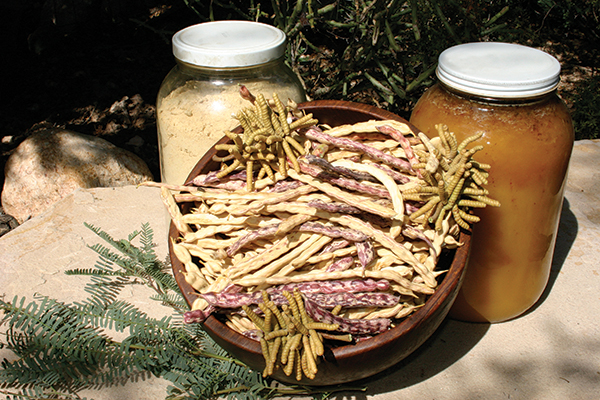
Screwbean, velvet, and honey mesquites pods. Photo by Brad Landcaster
It’s So Much More Than Just Milling Flour
It’s summer time again and, as many of you already know, that means it’s also mesquite harvesting and milling season in Tucson. And where including mesquite flour in your diet is a great way to add some diversity of flavor to your favorite culinary staples, Desert Harvesters Co-Founder Brad Lancaster would like you to know that the production and cultivation of native wild foods here in Tucson goes much, much further than simply whetting the appetites of local foodies. “We’re trying to get everyone to see the whole picture,” says Lancaster, “so the harvest is way more than just the pods.”
Our current agricultural system, says Lancaster, is based on “using imported plants, imported water, and imported fertilizer,” all of which, he points out, takes a major toll on our environment. But the plants that are native to the Tucson area—and that sustained life here for thousands of years before we were tapping the Colorado River as our primary water source—require no such interventions. The native wild food producing plants like the mesquite and ironwood trees, and the cholla and saguaro cacti, he says “are plants that can not only survive here, but thrive here with no imported water or fertilizer.” That’s why Lancaster says that Desert Harvesters is “looking at how we can use what we already have for free in a way that doesn’t deplete the ground water, doesn’t deplete the surface water…but reinfuses our ground water and reinfuses our rivers with water while reducing flooding.” And, Lancaster says, planting native wild food plants “where we live, work, and play,” while incorporating what he calls “water harvesting earthworks” helps to do all of these things while simultaneously improving our city’s landscape, as well as the habitat for local wildlife.
For this reason, though he says that local landscapes are currently dominated by non-native mesquite species that were largely selected for their tendency to grow quickly, Desert Harvesters focuses its efforts on the three types of mesquite tress native to the region—the screwbean, velvet, and honey mesquites. Not only are the local trees more consistent in taste and texture than imported varieties, but Lancaster says that they are also more beneficial to a number of native birds and insects. He says that a native mesquite will attract over sixty different native pollinators, whereas a non-native tree only attracts about a dozen. Thus, birds like the Wilson’s warbler have adjusted their migration patterns to coincide with the blooming cycles of native mesquites, and have therefore come to depend on those cycles in order to fatten up before the annual trip to their summer range about two-thousand miles north.
In support of their mission to increase the abundance of native wild food plants growing in and around Tucson, Lancaster says that Desert Harvesters is planning at least one seed-gathering expedition to look for native mesquites that taste great, ripen pre-monsoon (to avoid the growth of toxic, invisible molds that begin after the rains), and produce dense pod clusters for ease of harvesting. The group intends to harvest the seeds of these tress to sell at their events. That way, interested parties can be sure that they are planting native trees that not only provide summer shade and excellent wildlife viewing opportunities year-round, but will also provide them with a few pounds of naturally sweet, gluten-free flour every summer to utilize as they see fit. Lancaster says that some of his favorite uses for mesquite include making crackers, pie crust, and pizza dough, or using it to mix with or make coffee. He says it can also be cooked down and made into a syrupy sweetener that actually slows the body’s intake of sugar, making mesquite an ideal food for people who suffer from hypoglycemia or diabetes.
Lancaster says that mesquite beans produce a wide range of flavors, from “sweet, to nutty, to sweet-and-sour, to kind of lemony,” and that each and every tree is unique in its flavor profile. Thus, he says it’s important to sample from a number of trees when trying to find your prefect pod for harvest. He says that, when sampling from a mesquite, you should be sure to actually pick from the tree and not from the ground, and that “the pod should be dry enough that, when you bend it, it immediately snaps in two.” It should also be completely yellow, without any green left on it. You can gently work the bean with your teeth and tongue to extract the flavor when sampling, then spit it out. But be careful, as Lancaster says that the seeds are hard enough to crack a tooth. The hammer mills they use to turn the pods into flour, however, are strong enough to grind those seeds right along with the rest of the pod. When sampling mesquite beans, Lancaster says that you will not only want to taste for the presence of any one of the four “bad flavors,” which are “bitter, burning, chalky, or drying of the mouth or throat,” but that you should also look for beans that are particularly good-tasting to you. And it’s not enough to decide simply based on the initial flavor experience, says Lancaster, but that you should also wait for the aftertaste before making a final judgment. “It doesn’t matter how good of a cook you are,” he says, “you can’t take a bad flavor out of a bad-tasting pod.”
The mesquite-harvesting events this season kicked off with a fundraiser at La Cocina on May 31 which featured live music, along with food and drinks made from local wild ingredients, and they will continue throughout the month of June. For those looking to learn how to harvest native wild foods for themselves, Desert Harvesters will hold guided native food-harvesting walking and biking tours beginning at the Santa Cruz River Farmers’ Market at Mercado San Augustin on June 16 (tickets are $10). A concurrent demonstration at the market will showcase ways to turn those harvested ingredients into a range of culinary delights. The following week at the same location, June 23 is the 14th Annual Mesquite Milling and Wild Foods Fiesta, to which you can bring your clean and sorted mesquite pods to be ground into flour on site for a small fee. For reference, Lancaster says that it takes about five minutes to grind five gallons of harvested pods into about one gallon of flour. Other events include a mesquite seed collecting workshop, a happy hour fundraiser at Tap & Bottle, and a saguaro fruit harvesting workshop. More details are available on the Desert Harvesters website, the address to which is provided below.
Though Lancaster doesn’t expect to turn all Tucsonans into expert harvesters of wild food overnight, he says that the work of Desert Harvesters serves the greater purpose of “trying to shift how people see agriculture, and to (encourage them to) practice it in a way that does not degrade our environment, but enhances it.” For this reason, the Desert Harvesters events are “meant to be a full hands-on, mouth-on experience; we want people to not just get the theory, but to actually experience it,” Lancaster says. This kind of immersion, he says, is the only way to fully grasp the connection that already exists between the people that live in Tucson and the historic, natural agriculture of the region they call home. “We’re trying to deepen people’s engagement and relationships with these plants,” says Lancaster. And once you begin to harvest from the abundance that occurs naturally around you, Lancaster says you’ll likely find that, not only is it better for you, and better for the environment, but it’s ultimately “easier than going to the store.” And cheaper, too. What could be better than that?
For more information on the Desert Harvesters-sponsored mesquite milling and wild food harvesting events taking place this month, visit them online at DesertHarvesters.org.
Brunch with Mom
 This Mother’s Day, spend some quality time with the most important person in your life, and do it over a meal at one of these fine Tucson brunch spots. Reservations are strongly recommended (seats fill up very fast. Call now!) and note that many prices do not include tax or gratuity.
This Mother’s Day, spend some quality time with the most important person in your life, and do it over a meal at one of these fine Tucson brunch spots. Reservations are strongly recommended (seats fill up very fast. Call now!) and note that many prices do not include tax or gratuity.
THE GRILL AT HACIENDA DEL SOL
Surrounded with desert beauty, this resort is offering a full brunch buffet with omelet and waffle bars, cheese blintzes, a seafood station with sushi, prime rib, an array of decadent desserts such as chocolate lavender cupcakes and raspberry champagne panna cotta and bottomless mimosas. Brunch is from 9:00 am to 2:00 pm. Price: $65 per adult, $32.50 per child age 7-14, free for ages 6 and under. 5601 N Hacienda Del Sol. 520-529-3500. HaciendaDelSol.com
MAYNARDS KITCHEN
Served family style, this three course brunch will feature strawberry and mascarpone crepes, leg of lamb, poached salmon and bing cherry and white chocolate devil’s food cake. Vegetarian options will be available upon request. Brunch is from 9:00 am to 2:00 pm. Price: $55 per adult, $15 per child age 10 & under. 400 N Toole Avenue. 520-545-0577. MaynardsTucson.com
AGUSTIN KITCHEN
Set in the Mercado San Agustin, a four course menu will be offered with many local and sustainable sourced items such as, grilled spring vegetables, gazpacho, surf & turf, glazed game hen, and a mini desert trio. A separate menu will be available for kids. Brunch is from 10:00 am to 3:00 pm. Price: $50 per adult, $15 per child age 12 & under. 100 South Avenida del Convento. 520-398-5382. AgustinKitchen.com
HILTON TUCSON EL CONQUISTADOR
Live music and a champagne toast make for a delightful brunch buffet in the Turquoise Ballroom, featuring farmers market salads, lemongrass poached shrimp, prime rib, Chef Ernesto’s famous pasole, pistachio crusted chicken tenderloin, huevos rancheros, blueberry and apple bread pudding, and a desert extravaganza. Brunch is from 10:00 am to 2:30 pm. Price: $59.95 per adult, $19 per child age 6-12, children under 5 are free. 10000 North Oracle Road. 520-544-1244. HiltonElConquistador.com
 RITZ-CARLTON DOVE MOUNTAIN
RITZ-CARLTON DOVE MOUNTAIN
For a relaxing, spa inspired brunch, join this award winning culinary team in a celebration with a brunch buffet at the CORE Kitchen and Wine Bar. Brunch is from 10:00 am to 2:00 pm. Price: $80 per adult, $35 per child. 15000 North Secret Springs Drive. 520-572-3401. RitzCarlton.com/DoveMountain.
TOHONO CHUL
Soak in the springtime atmosphere at the Garden Bistro with a brunch buffet featuring breakfast favorites such as an omelet station, freshly baked cinnamon rolls, quiche bar, carving station, jalapeño scalloped potatoes, portobello risotto, seared ahi tuna lettuce cups, and an assortment of desserts such as brûlées, streusel and cakes. Brunch is from 9:00 am to 2:30 pm. Price: $44.95 per adult, $13.95 per child age 10 & under, children under 5 are free. 7366 North Paseo del Norte. 520-742-6455. TohonoChulPark.org.
DAKOTA BAR & GRILL
Featuring a brunch buffet with delicious fare such as, herb crusted prime rib, tavern style ham, oysters, silver dollar pancakes, chilled strawberry champagne soup, eggs benedict, and a selection of desserts. Each mother will receive a complimentary mimosa. Brunch is from 9:00 am to 3:00 pm. Price: $38 per adult. Telephone for kids pricing. 6541 E Tanque Verde Road (located in Trail Dust Town). 520-298-7188. DakotaTucson.com.
WESTWARD LOOK
Held in the Sonoran Ballroom, this brunch buffet features delectable options such as, artisan cheeses, conch ceviche, chicken stuffed with leeks and brie, pecan crusted trout, roasted pork loin, and a variety of pies, cakes and mini desserts. Brunch is from 9:00 am to 2:00 pm. Price: $59 per adult, $25 per child ages 5-11, children under 4 are free. 245 East Ina Road. 520-917-2970. WestwardLook.com.
THE CARRIAGE HOUSE
Inspired by Hong Kong tea houses, this newly opened venue offers a brunch menu with international dim sum fare mixed with traditional favorites such as roasted pork buns and dumplings, French toast, quiche and eggs benedict. Brunch is from 10:00 am to 2:00 pm.Prices vary. 125 South Arizona Avenue. 520-615-6100. CarriageHouseTucson.com
CAFÉ A LA C’ART
Located in the Tucson Museum of Art courtyard, this local’s favorite will feature a traditional brunch with classic fare such as apple wood smoked bacon, shrimp cocktail, blintzes with fruit compote, vegetable frittata, braised short ribs, miniature desserts, and a build your own omelet station. Brunch is from 9:00 am to 3:00 pm.Price: $29.95 per adult, $10.95 children under age 12. 150 North Main Avenue (inside the Tucson Museum of Art courtyard). 520-628-8533. CafeaLaCartTucson.com
ARIZONA INN
Offering a three course champagne brunch with traditional favorites such as, wedge salad, smoked salmon benedict, filet mignon, grilled lamb chops and an assortment of desserts. Brunch is from 11:00 am to 9:00 pm. Price: $65 per adult (includes a glass of champagne or sparkling cider), $35 children under age 12. 150 North Main Avenue (inside the Tucson Museum of Art courtyard). 520-628-8533.
PENCA
Serving a $29 3-course menu in addition to a $12 kids menu. The kids stay happy with ensalada de fruta or gelatina de fresa, and quesadilla or corn cakes, while Mom enjoys gelatina de pina colada, ensalada de fruta con chamoy de jamaica or trucha a la plancha (seared trout over a spinach salad with grilled vegetables, jalapeno, lime and cilantro chimichurri.) Other options are sopa de elote y flor de calabaza and tamales con acihote. Everyone finishes off with paletas (ice pops in the flavors of jamaica, pina, fresa, chamoy, papaya con chile and lime.) Brunch is from 10:00 am to 3:00 pm. And don’t forget Dia de las Madres on May 10th. 50 East Broadway. 520-203-7681. PencaRestaurante.com
CUP CAFÉ
Featuring four specials to mark the occasion in addition to their regular brunch menu, smoked salmon frittata, sleeping frog farms frittata, chicken & brioche French toast and a duck confit paella. Brunch is from 7:00 am to 3:00 pm. Prices vary. 311 East Congress Street. 520-798-1618. HotelCongress.com/Food
THE WESTIN LA PALOMA RESORT & SPA
Celebrate the occasion in this stunning foothills desert landscape, with enticing options such as, lemon fennel poached chicken, crab claws, slow roasted pork loin with a blackberry chipotle glaze, pan roasted sea bass, lemon ricotta pancakes, custom omelets, and an assortment of deserts such as chocolate Kahlua flourless cake, baked meringue pops, and southwest inspired deserts such as prickly pear rhubarb cobbler. Brunch is from 9:00 am to 2:00 pm. Price: Mother’s Day Brunch: $59.99 per adult, $21.99 per child. 3800 East Sunrise Drive. 520-742-6000. WestinLaPaloma.com.

The Westin La Paloma offers one of the more spectacular spots in Tucson to brunch with Mom.
Horticultural Notes from an Urban Epicurean
 Grab a beer and a trowel and get into the garden! The summer is technically over this month and even though some days it feels like the autumnal equinox is a big lie, the garden is gearing up for the shorter days, cooler temperatures, and is getting ready to provide you with a season of fresh vegetables. It’s time to plant.
Grab a beer and a trowel and get into the garden! The summer is technically over this month and even though some days it feels like the autumnal equinox is a big lie, the garden is gearing up for the shorter days, cooler temperatures, and is getting ready to provide you with a season of fresh vegetables. It’s time to plant.
The left over warm season plants will still produce. Some may, in fact, be reinvigorated by the cooler weather. Peppers, eggplant, basil…many will still be giving you lots of of return for keeping them watered and cared-for through the hot summer months. But maybe that tomato plant isn’t really producing much, sprawling all over and taking up precious space. Maybe you cannot eat another Armenian cucumber even if you were forced at gunpoint. Many people, despite knowing better, will keep these plants going, watering them, letting them take up room instead of planting new fall crops. Practice discernment and pull those plants up. Make some room for the new season.
Plant Now
Suggested below are cool-season crops you can plant now and throughout the cool season. Common and maybe less familiar crops are listed here; if you aren’t familiar with one, google it or start reading seed catalogs and expand your horizons.
Greens
Lettuce, arugula, leaf chicories (escarole, endive, puntarelle, frisée, radicchio), asian greens (bok choi, tatsoi, napa cabbage, mizuna, mibuna, garland greens), sorrel, nasturtium, mache, cress, miner’s lettuce, spinach and celery can all be planted now. Most prefer well-amended garden soil and be sure your beds are in at least a half day of direct sun–in my opinion full sun is optimal. Some greens may prematurely bolt (go to seed). This early in the season you can look for “bolt resistant” and “heat tolerant” varieties (listed on seed packets or in catalogs). You can continue to plant greens throughout the winter until about late April or May (some crops and varieties last longer into the season). You can find these plants at your local plant nursery (please support local) in 6-packs or single 4” pots, normally. But you can find a lot more variety if you order seed packets (seed sources listed at end of article). Plant directly into the garden as per instructions on the packet. The rule of thumb is to plant about as deep as the size of the seed; as seedlings emerge, thin them to accommodate the mature size of each plant (add the seedlings you thin to your salad as microgreens).
Root Vegetables
Carrots, radishes, beets, turnips, burdock, parsley root, celeriac, chicory, salsify, scorzonera, and rutabaga can all be planted. Plant and seed as described above. The primary difference with root crops is that you want to ensure that you don’t have soil that is too rich–you will end up with lots of green tops but root development will be weak. Garden beds that are on the sandy side are great for these crops.
Cole Crops
Broccoli, cauliflower, cabbage, rapini, kale, Brussels sprouts, kohlrabi, and collards are all related, in fact they are all the same species (Brassica oleraceae). Treat them as you would greens by providing nutrient-rich garden soil.
Alliums
These are the plants in the onion family: the various bunching and bulb-producing onions, garlic, elephant garlic, Egyptian walking onion, shallots, leeks, chives, Chinese chives can be found in nurseries and catalogs this time of year as sets (dried bulbs), starts (green bulbs sold in bunches) or as plants in containers. The multiplyer types are best planted in a permanent location as they will keep growing year after year, whereas the single bulb-type alliums will be harvested next late spring/early summer when the tops dry back.
Legumes
While many plants in the bean family are grown in the summer, some prefer the cool season. Garbanzos, favas, lentils and peas are perfect to plant right now. Make sure you don’t plant them close to the root vegetables (they are associated with microorganisms that increase nitrogen in the soil which make root crops grow more leaves than roots), and generally they also prefer soil that is not as enriched as the greens and cole crops.
Cool-Season Herbs
These are grown just like greens and in fact, in my opinion, many of these herbs are just greens with more aroma. Best from seed, plant parsley, cilantro, chervil, dill, lovage, anise, caraway, fennel, borage and salad burnet.
Other Vegetables and Herbs
Most of these are perennials (plants that live more than one season) so give them a permanent location and room to grow. Asparagus can be planted this time of year but make sure you give them lots of room, far away from the other plants. They are normally found in catalogs and nurseries as crowns (bulblike structures with roots). Artichoke and Cardoon can be planted from seed or plant. You can also plant any perennial herbs like thyme, oregano, marjoram, rosemary, sage, savory, rue, santolina or mint.
A few favorite seed sources: Native Seeds/SEARCH, Baker’s Creek, Kitazawa Seed Company, Seeds from Italy, Southern Exposure, The Cook’s Garden, Seed Savers Exchange, Territorial Seed Company. Find plants locally at Mesquite Valley Growers, Civano Nursery, Rillito Nursery and Harlow’s.
Jared McKinley is a food and plant fanatic in downtown Tucson. Follow him on Instagram @KittyKattMcKinley n
Mesquite Milling Time
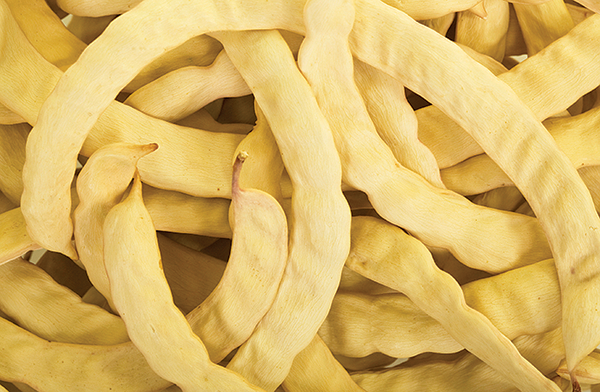 Plant, Harvest, Mill, and Celebrate Wild Abundance Before the Rains
Plant, Harvest, Mill, and Celebrate Wild Abundance Before the Rains
Desert Harvesters is co-organizing events to plant, harvest, mill, and celebrate local wild foods in the month of June—the peak of our native bean trees’ harvest season. These events will give you the opportunity to taste and enjoy delicious desert wild foods; learn how to significantly elevate the quality and flavor of your harvests; and enable you to align more closely with the Sonoran Desert’s seasonal cycles in a way that enhances our shared home and biome. Toward that aim, Desert Harvesters is teaming up with local culinary businesses to increase both the offerings of native wild foods in their cuisine, and the growing of some of these native food plants within water-harvesting earthworks next to their buildings and streets.
But why is Desert Harvesters doing this during the hottest, driest time of summer? In June, many of our essential native wild food plants will be in the process of pumping out incredible fruit, seed, and bounty in preparation for the first summer rains, which typically begin sometime between June 24—Día de San Juan—and July 4. This way, when the rains come, they will enable the seeds to germinate and grow abundantly—especially where the rain is planted, or harvested, with the seed.
The events include:
Celebration of Place: A Desert Harvesters Evening of Story, Food, Drink, and Music Tuesday, June 9, 2015 5–10pm. Hosted at La Cocina 201 N. Court Ave, 5–10 pm: Live music along with drinks and dinner featuring locally grown and harvested native wild food ingredients. Come try a margarita made with locally harvested prickly pear juice! 7:30 to 8:15 pm: Desert Harvesters: Planting & Harvesting Rain, Wild Foods, and Place-Based Celebration, presented by Brad Lancaster. This entertaining story tells how Desert Harvesters and other individuals and organizations have cultivated stronger ties to wild food production, habitat, and health to regenerate ourselves, our community, and our shared watershed and ecosystem—and how you too can be a dynamic part of it all. As part of La Cocina’s Tuesdays for Tucson tradition, 10% of all proceeds from the evening’s food and drink sales will be donated to Desert Harvesters.
Desert Harvesters Guided Native Food-Tree Harvest Tours Thursday, June 18, 2015 Hosted at the Santa Cruz River Farmers’ Market in partnership with the Community Food Bank 100 S. Avenida del Convento West of I-10 at Congress and Grande, 4:30 pm: Required sign up for walking harvest (tour begins at 5 pm) 5:30 pm: Required sign up for biking harvest (tour begins at 6 pm) Led by Desert Harvesters including Amy Valdés Schwemm and Brad Lancaster $5 to $10 per person (sliding scale). These short, easy-paced hands-on harvest tours show you how to:
– Identify and sample from the mesquite trees with the best-tasting pods. Every tree is different, but some varieties are consistently much better than others. Taste the difference, and you’ll settle for only the best. They will also likely harvest from desert ironwood, canyon hackberry, and palo verde.
– Harvest safely, ethically, and responsibly. Harvesting pre-rains is the best practice to avoid invisible toxic mold; harvesting from the tree avoids fecal contamination of ground harvests, etc.
– Use cool tools such as the harvest hoe.
– Plant seeds at the best time for the best bean trees (and other native perennial food plants), and how to plant water in a way that ensures the growth of a vibrant, multi-beneficial tree with tasty and prolific harvests irrigated passively with only free on-site waters. These trees can be the basis for edible forest guilds. Everyone is strongly encouraged to bring sun protection (hat, sunscreen, sunglasses), and a reusable water bottle.
In addition, Barbara Rose of Bean Tree Farm will be offering Bean Tree Processing Demonstrations from 4–7 pm. These demonstrations by a desert-foods farmer/fermenter/cook will show you how to process milled or whole desert ironwood seeds, palo verde seeds, and mesquite pods into numerous tasty dishes ranging from sprouts to edamame to desert peanuts to atole to sauces and beyond. (These demonstrations are part of the Santa Cruz River Farmers’ Market’s ongoing Desert Harvest series to teach the public how to identify, process, and use native foods.)
Other tasty & useful features of the event include: The official launch of Exo Roast Company’s new Exo Mesquite Cold Brew coffee drink, made with locally sourced mesquite pods, as well as Exo Chiltepin Cold Brew which features Sonoran-grown chiltepin peppers, dark chocolate, and cream—both will be available for sample and sale Demonstration of cargo bicycles for harvesting set up by Transit Cycles Hand-made harvest bags by Iskashitaa for sale Native wild foods for sale such as mesquite flour; cactus fruit, drinks, syrup, and popsicles; ocotillo blossom kombucha; and cholla buds. Look throughout the Santa Cruz River Farmers Market for San Xavier Farm Co-op, Desert Tortoise Botanicals, Aravaipa Heirlooms, Black Mountain Spring Kombucha, and other vendors.
13th Annual Desert Harvesters Mesquite Milling & Wild Foods Fiesta Thursday, June 25, 2015 (in the unlikely event of heavy rain the milling may be postponed to the following Thursday, July 2) 4–7 pm Hosted at the Santa Cruz River Farmers’ Market in partnership with the Community Food Bank 100 S. Avenida del Convento West of I-10 at Congress and Grande, Mesquite (and carob) pods will be milled BEFORE THE SUMMER RAINS to encourage harvesting before the rains (as recommended by the Mesquite Harvest Working Group) for a higher-quality harvest, with less insect predation, and far less potential for invisible molds than are more common in post-rain harvests.
Pods for milling must be clean; dry; and free of mold/fungus, stones, leaves, and other debris. Cost: $3/gallon of whole pods, with a minimum of $10. 1 gallon of whole mesquite pods mills into one pound of flour, so the price averages $3 per pound of flour—this is a bargain considering that the flour usually sells for $14 to $20 per pound. After pod inspection and prepayment, you may leave your pods in sealed food-grade containers (preferably 5-gallon plastic buckets with lids) with owner’s name and phone number written clearly on each container. Flour will be ready within a week and must be picked up.
Mesquite flour is a naturally sweet, nutritious, and delicious addition to recipes for cakes, cookies, pizza, bread, tortillas, granola, dog biscuits—you name it! And like many other native foods, gluten-free mesquite is great for people with hypoglycemia and diabetes as it regulates blood glucose levels.
Desert Harvesters Happy Hour Friday, June 26, 2015 5–8 pm Tap & Bottle 403 N 6th Ave #135. Celebrate the harvest and coming rains with cool local brews. Tap & Bottle will have great regional brews on-hand, some infused with locally sourced native wild ingredients. A percentage of all happy-hour sales will be donated to Desert Harvesters. Plus, a local food truck will be on site with delicious offerings, some including native wild ingredients.
For more info visit: www.DesertHarvesters.org or to find out how you can volunteer, email volunteer@DesertHarvesters.org

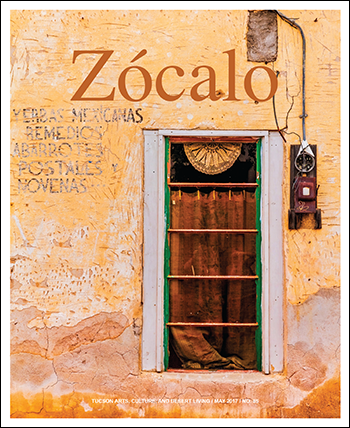
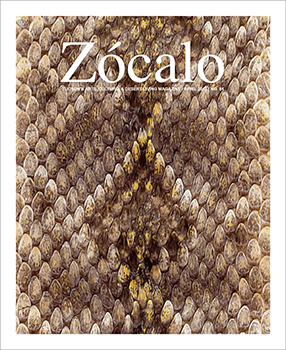
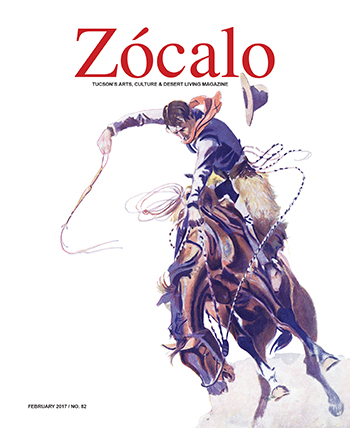

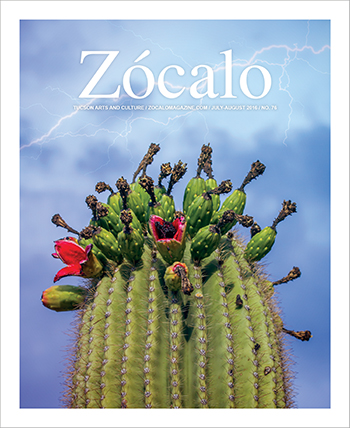
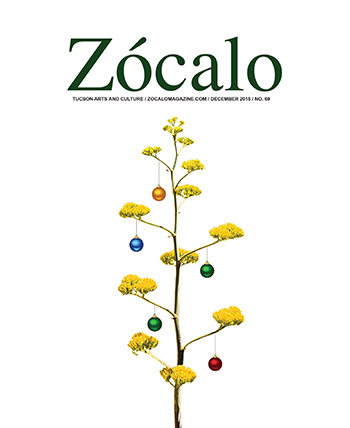




Also find us on...